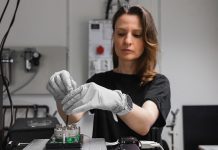Scientists have identified a potential biomarker that might lead to tests to detect the compound used in gamma hydroxybutyric acid (GHB), commonly known as a ‘date rape drug.’
GHB is rapidly absorbed so it is difficult for law enforcement to tell if someone has been given it.
Now, scientists writing in the American Chemical Society Journal, including Míriam Pérez-Trujillo and her colleagues, say they analysed the samples using nuclear magnetic resonance spectroscopy and found that they could detect GHB in urine samples taken up to two hours after ingestion. They also could distinguish GHB from other similar drugs
The Drug Control Centre at King’s College London provided samples, and funding and support came from MINECO, a Jose Castillejos mobility fellowship from the Spanish government, an Erasmus+ trainee fellowship from the European Union and a King’s-China scholarship.













